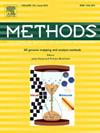基于免疫信息学的多形性胶质母细胞瘤(GBM)转化生长因子-2蛋白(TGFB2)多表位疫苗设计
IF 4.3
3区 生物学
Q1 BIOCHEMICAL RESEARCH METHODS
引用次数: 0
摘要
多形性胶质母细胞瘤(GBM)是一种恶性胶质瘤,是世界上死亡率较高的中枢神经系统肿瘤。尽管死亡率很高,但目前还没有有效的治疗方法。经典的治疗方法通常适用于患者,但患者会在短时间内失去生命。一种能够延长患者生命的强效疫苗或药物尚未出现。本研究对GBM的转化生长因子β -2蛋白(TGFB2)进行了多种生物信息学分析,并进行了多表位疫苗设计。这些分析包括致敏性、抗原性和毒性测试、各种表位选择、分子对接、分子动力学模拟和免疫模拟分析。作为所有分析的结果,一种名为GVac的候选疫苗被发现。Gvac用一种叫做抗细菌毒素(BatxC)的佐剂增强,BatxC是一种抗菌肽。虽然对Gvac的分析通常会产生强有力的结果,但如果继续进行下去,它将提供用于各种临床研究的潜力。随着技术的发展,现在有必要摆脱传统的治疗方法,采用能够提供更快、更有效结果的治疗方法。这也是本研究的目的。Gvac可能为世界各地等待治疗的GBM患者带来希望,这些研究需要继续进行。本文章由计算机程序翻译,如有差异,请以英文原文为准。
Immunoinformatics-based multi-epitope vaccine design using transforming growth factor beta-2 proprotein (TGFB2) for glioblastoma multiforme (GBM): GVac
Glioblastoma multiforme (GBM), a malignant glioma, is a central nervous system tumor with a high mortality rate in the world. Despite its high mortality rate, there is no effective treatment yet. Classical treatment methods are usually applied to patients, but patients lose their lives in a short time. A strong vaccine or drug that will extend the life of patients has not yet emerged. In this study, various bioinformatic analyses were performed on the Transforming growth factor beta-2 proprotein (TGFB2) belonging to GBM, and a multi-epitope vaccine design was made. These analyses include allergenicity, antigenicity and toxicity tests, various epitope selections, molecular docking, molecular dynamics simulation and immune simulation analyses. As a result of all analyses, a vaccine candidate called GVac was revealed. Gvac is enhanced with an adjuvant called batroxicidin (BatxC), an antimicrobial peptide. While analyses of Gvac generally yield strong results, it offers the potential to be used in various clinical studies if carried forward. With developing technologies, it is now necessary to move away from classical treatment methods and apply to treatment methods that can provide faster and more effective results. This is also the aim of this study. Gvac may offer hope to GBM patients awaiting treatment around the world and the studies need to be carried forward.
求助全文
通过发布文献求助,成功后即可免费获取论文全文。
去求助
来源期刊

Methods
生物-生化研究方法
CiteScore
9.80
自引率
2.10%
发文量
222
审稿时长
11.3 weeks
期刊介绍:
Methods focuses on rapidly developing techniques in the experimental biological and medical sciences.
Each topical issue, organized by a guest editor who is an expert in the area covered, consists solely of invited quality articles by specialist authors, many of them reviews. Issues are devoted to specific technical approaches with emphasis on clear detailed descriptions of protocols that allow them to be reproduced easily. The background information provided enables researchers to understand the principles underlying the methods; other helpful sections include comparisons of alternative methods giving the advantages and disadvantages of particular methods, guidance on avoiding potential pitfalls, and suggestions for troubleshooting.
 求助内容:
求助内容: 应助结果提醒方式:
应助结果提醒方式:


